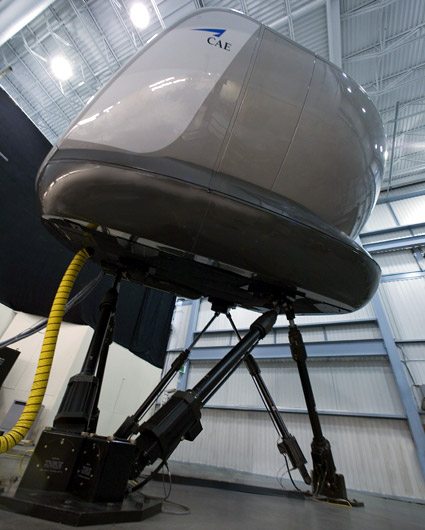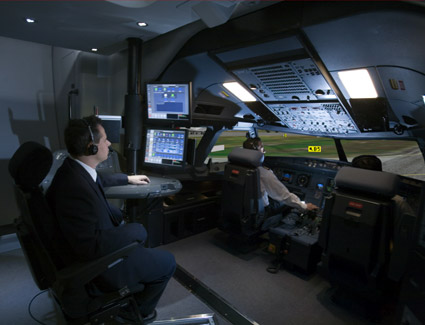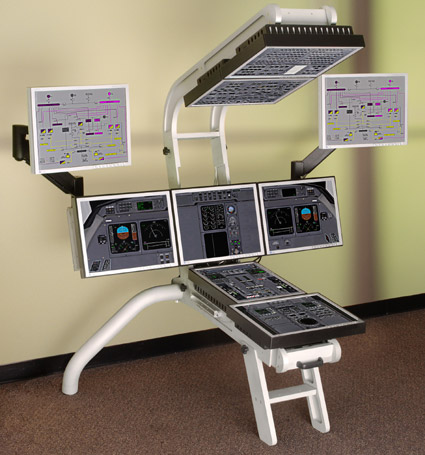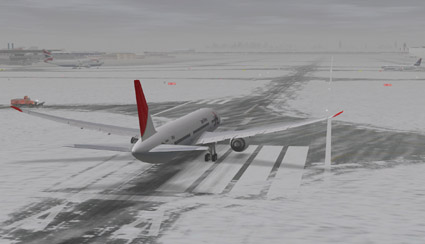Aircraft Simulators Get Multi-GPU Graphics Horsepower
Montreal (Canada) - When read about Nvidia's SLI and ATI's Crossfire technologies these days, we often get the impression that multi-GPU solutions don't make a lot of sense yet. But they aren't just useful in some games and benchmarks to get to the top of the ladder of bragging rights.
Multi-GPUs are more and more used in industrial applications, such as in a little known "glass cockpits" in planes and helicopters around the world. Not too long ago, 3Dfx (acquired by Nvidia) was making ton of money on so called LVHP (Low Volume Higher Profit) devices, built inside Apache helicopters and today's graphics chip manufacturers are tied into such systems for military and civilian aircraft.
CAE, a Canadian developer of simulation and modeling software and hardware, just signed such a deal to provide four full-flight simulators (FFS) with additional "Simfinity" training devices to Lufthansa Flight Training and Xiamen Airlines. We hear that this deal is worth about $52.45 million, which is an indication just how lucrative the low-volume-high-profit simulator market is.
Lufthansa Flight Training ordered CAE 5000 FFS devices to simulate the Airbus A320 and a brand new CAE 7000 FFS system to simulate the Boeing 747-8 Intercontinental. Lufthansa will also receive an additional Boeing 747-400 CAE Simfinity IPT system, which is planned to be be converted to a 747-8 configuration in the future.
Xiamen Airliners ordered two CAE 7000 systems tailored to the Boeing 737-800, as well as a set of additional CAE Simfinity training devices for the same airplane.
These orders for four FFS and several IPT systems would not be so interesting if there wasn't a very interesting technology behind all this. These systems are nothing else but a combination of hydraulics, extremely powerful computers, LCD monitors and Liquid Crystal on Silicon projectors (LCoS). Of course, there are state of the art graphics included - graphics that promise to simulate world geographies, with airplanes taking off and touching down. Weather conditions are simulated can be pre-programmed or entered on-the-fly.
CAE did not disclose the exact graphics hardware, but sources told TG Daily that these "extremely powerful computers" use ATI Radeon graphics chips, mostly in Crossfire X configurations with either two or four GPUs. Given the fact that it takes a long time to certify a component for such a critical system and given the fact that product cycles in this industry are extremely long, it is not surprising that CAE systems is not using ATI's latest Radeon 3800 series of graphics processors. Instead, the simulators integrate rather GPUs from 1000 and 2000 series - and cards such as the Radeon X1900XTX and HD 2900XT.
Get Tom's Hardware's best news and in-depth reviews, straight to your inbox.
Yes, you could consider this simulator a very expensive game. But don't think that SLI and Crossfire are for LAN parties only.



